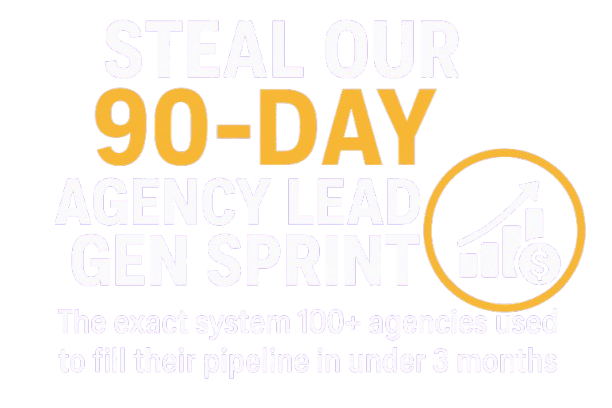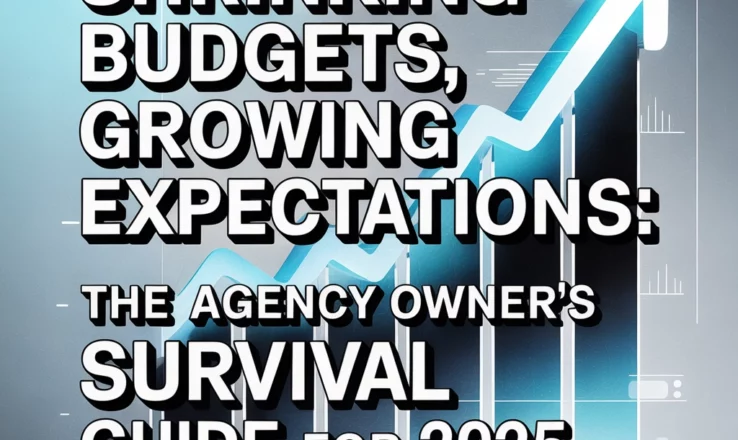
Here's the brutal truth: your clients are demanding more while paying less, and this trend isn't reversing anytime soon. The average agency profit margin hovers around 15-20%, leaving zero room for wishful thinking or outdated strategies. But here's what separates the agencies that thrive from those that merely survive: they treat constraints as competitive advantages.
I'm going to walk you through the exact framework that's helping agency owners not just weather this storm, but emerge stronger. This isn't theoretical fluff: it's the battle-tested playbook you need to implement starting today.
Diagnose Your Current Position (Before You Plan Your Next Move)
Stop planning in the dark. Right now, 65% of agency leaders rate their confidence at 7 or higher, yet most are flying blind on their actual financial health. Here's your immediate action plan.
First, calculate your real profit margins on each client. Not your estimates: your actual numbers. Pull the last six months of data and break down every project by time invested, resources used, and revenue generated. Most agencies discover they're losing money on 30-40% of their client relationships.
Next, identify your utilization rates. Top-performing agencies achieve 45-50% gross margins through strategic resource management. If you're below 40%, you're hemorrhaging money on inefficiency, not budget constraints.
Finally, audit your client acquisition costs versus lifetime value. Agencies that focus on retention see profit boosts up to 75% because keeping existing clients costs significantly less than constantly hunting for new ones.
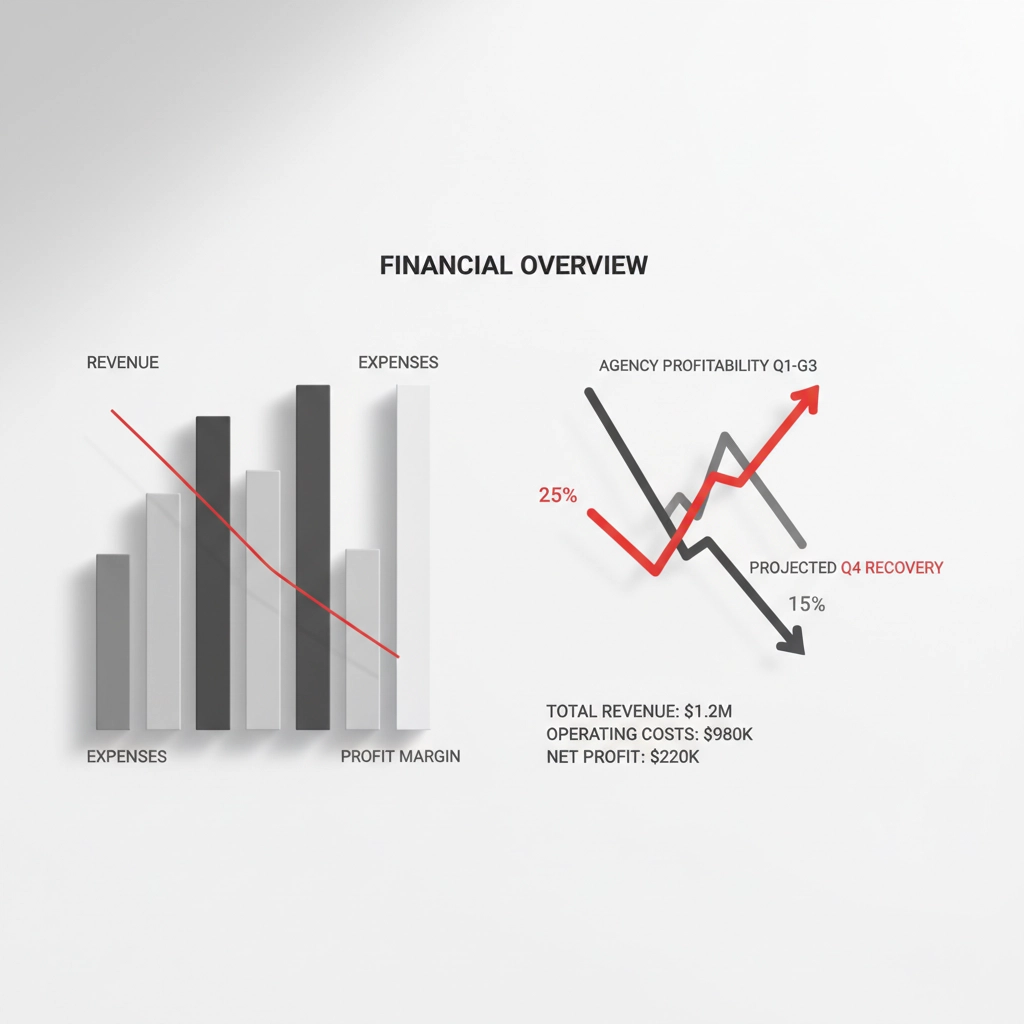
Strategic Responses That Actually Move the Needle
Transform Into a Trusted Advisor (Not Just Another Vendor)
Your clients don't care about your creative process or your team's credentials. They care about business impact. Start every client conversation with their revenue goals, not your service offerings.
Here's your repositioning framework: Instead of saying "We do social media management," say "We help SaaS companies reduce customer acquisition costs by 35% through strategic social engagement." See the difference? One positions you as a cost center, the other as a profit driver.
Document three specific business outcomes you've delivered for similar clients. Not vanity metrics: actual revenue impact, cost savings, or market share gains. Use these as your new positioning foundation.
Build Your Productized Service Arsenal
Agencies are shifting toward productized approaches because custom work doesn't scale profitably. Here's how to build yours without losing your competitive edge.
Identify the three services you deliver most frequently. Break each one into standardized processes with defined deliverables, timelines, and pricing. This isn't about becoming a commodity: it's about creating predictable profitability.
For example, if you frequently handle website redesigns, create a "Revenue-Focused Website Audit & Optimization" package. Include specific deliverables: conversion rate analysis, user experience audit, technical SEO review, and three months of optimization support. Price it based on value delivered, not hours spent.
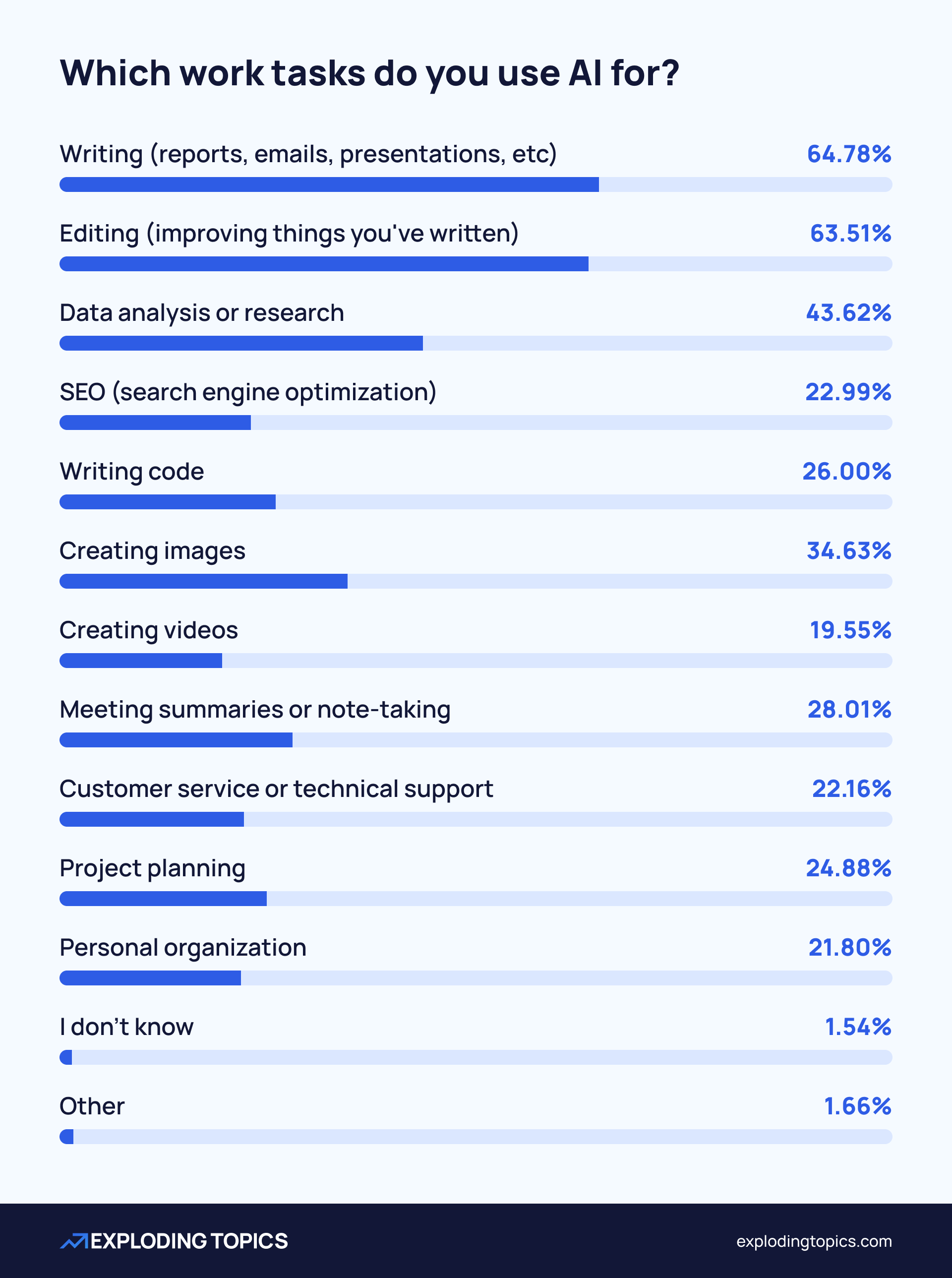
Leverage AI to Multiply Your Output (Without Multiplying Your Costs)
The data doesn't lie: 64.78% of agencies are already using AI for writing, and 63.51% for editing. But most are barely scratching the surface of what's possible.
Start with content production. Use AI to handle first drafts, research, and data analysis while your team focuses on strategy and client relationships. This can reduce project delivery times by 40-60% without compromising quality.
Next, automate your repetitive processes. Client reporting, social media scheduling, and basic SEO audits can all be partially automated, freeing your team for higher-value work.
But here's the key: don't position AI as a cost-cutting measure to clients. Frame it as enhanced capability and faster turnaround times. Your clients benefit from improved efficiency without feeling like they're getting less human attention.
Meet Rising Expectations Without Breaking Your Budget
Implement Performance-Based Pricing Models
Economic uncertainty is driving clients toward performance-based arrangements, and you should embrace this shift. It positions you as a partner invested in their success, not just a service provider collecting monthly retainers.
Start with hybrid models. Combine a base retainer (covering your costs) with performance bonuses tied to specific KPIs. For example: base retainer of $5,000 plus 10% of revenue generated above baseline targets.
Choose metrics you can directly influence. Website conversions, lead quality scores, or cost-per-acquisition work well. Avoid vanity metrics like social media followers or website traffic that don't directly correlate with business outcomes.
Master the Art of Scope Management
Scope creep kills profitability faster than any external market force. Here's your defense system.
Document everything before projects begin. Use detailed project briefs that specify deliverables, timelines, revision rounds, and communication protocols. Make clients sign off on these before any work starts.
Create a change request process. When clients ask for additional work (and they will), present them with a formal change request including time investment and cost implications. This isn't about being difficult: it's about maintaining project profitability.
Build buffer time into your estimates. Add 20-30% contingency to all project timelines and budgets. This gives you flexibility to handle unexpected challenges without eating into your margins.
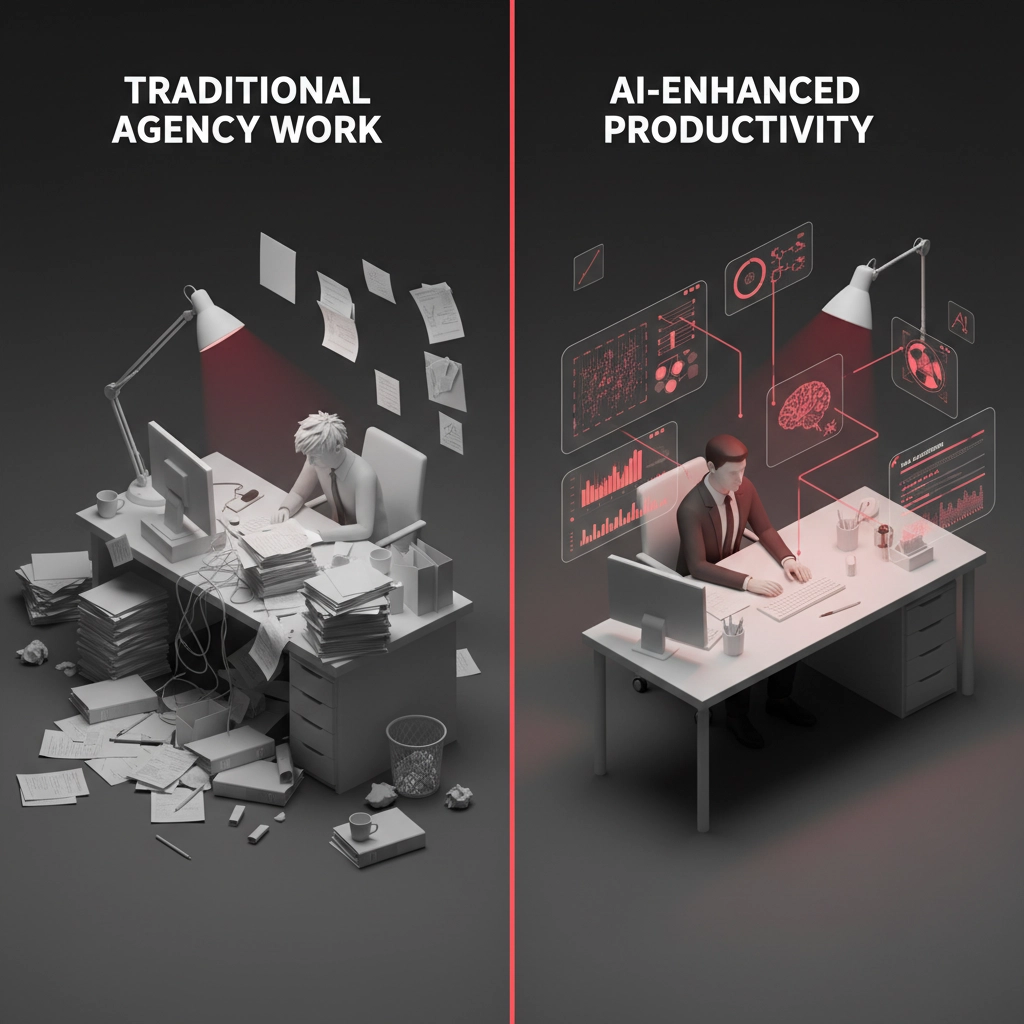
Build Anti-Fragile Operations That Thrive Under Pressure
Develop Your Flexible Planning Framework
Leading agencies are ditching rigid annual plans for agile quarterly strategies. This allows rapid adaptation without sacrificing long-term vision.
Set campaign-driven goals rather than fixed revenue targets. Instead of "increase revenue by 30%," aim for "launch three new service packages and achieve 15% client retention improvement." These goals adapt better to changing market conditions.
Review and recalibrate monthly. Track leading indicators like proposal-to-close rates, client satisfaction scores, and team utilization. Adjust strategies based on actual performance, not hoped-for outcomes.
Diversify Your Revenue Streams Strategically
Don't expand for the sake of expansion: diversify to reduce risk and increase profitability. Here are proven approaches.
Create passive income through training or software tools. Package your expertise into online courses, workshops, or SaaS solutions that generate revenue without requiring proportional time investment.
Develop strategic partnerships with complementary service providers. Cross-referral agreements with web developers, copywriters, or consultants can generate steady lead flow without marketing costs.
Consider white-label opportunities with larger agencies. This provides steady revenue streams while allowing you to focus on service delivery rather than sales.
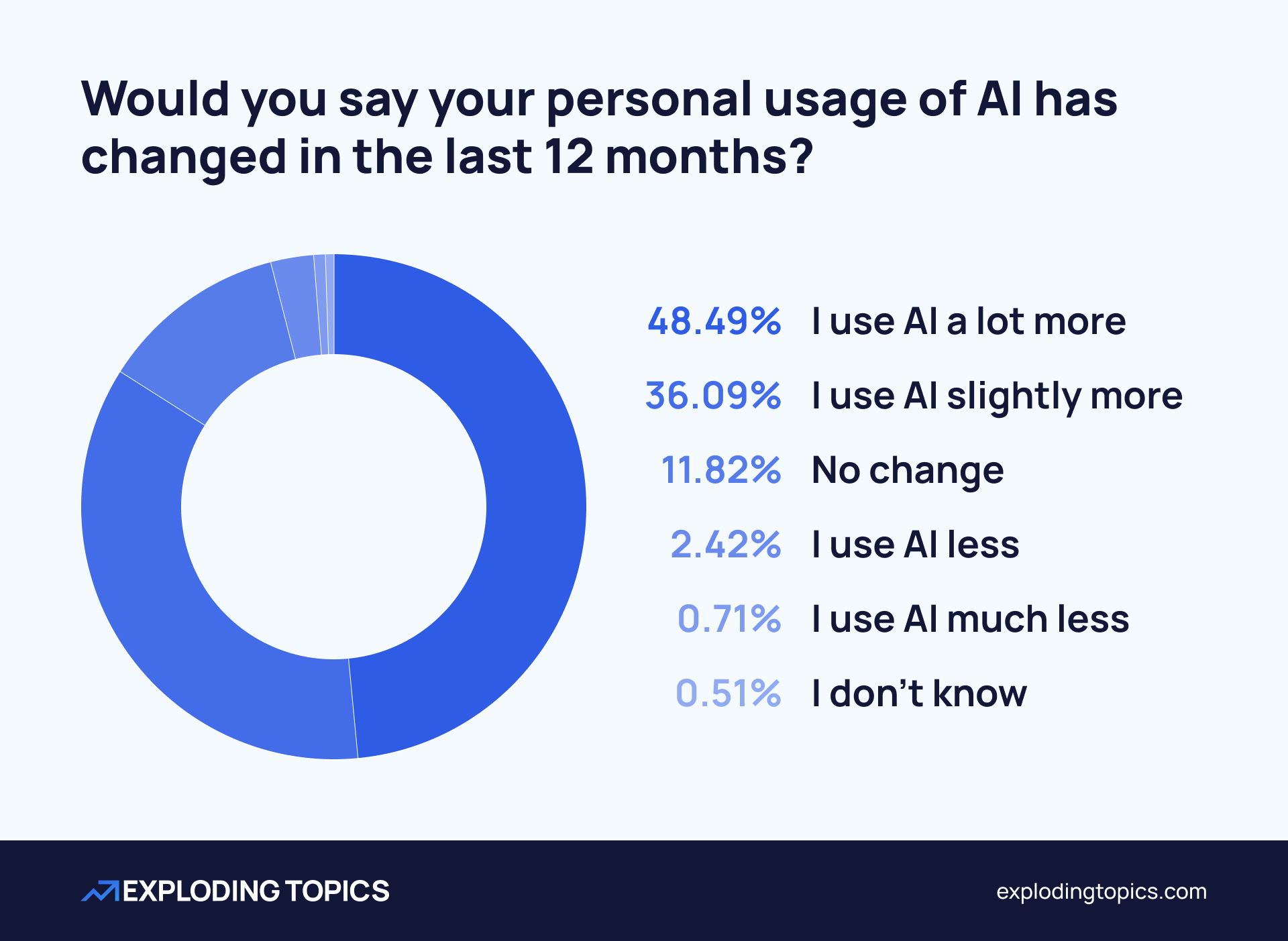
Your 2025 Implementation Action Plan
Month 1: Financial Foundation
Calculate real profit margins by client and service. Identify your most and least profitable relationships. Make difficult decisions about unprofitable clients: either restructure their agreements or part ways.
Month 2: Service Optimization
Productize your three most common services. Create standardized processes, pricing, and delivery timelines. Test these with one new client before rolling out broadly.
Month 3: Technology Integration
Implement AI tools for content creation and process automation. Train your team on new workflows and measure time savings. Reinvest saved time into higher-value strategic work.
Ongoing: Performance Tracking
Monitor five critical metrics weekly: client acquisition cost, lifetime value, project profitability, utilization rates, and cash flow patterns. Use this data to make informed decisions about pricing, resource allocation, and growth investments.
The agencies that will dominate in 2025 aren't the ones with the biggest budgets: they're the ones that maximize value from every dollar spent and every hour invested. Start implementing these strategies today, and you'll not only survive the current market conditions but position yourself to capture significant market share when conditions improve.
Remember: your competitors are dealing with the same budget pressures and rising expectations. The difference is whether you're complaining about them or using them as fuel for innovation and optimization. Choose wisely.
